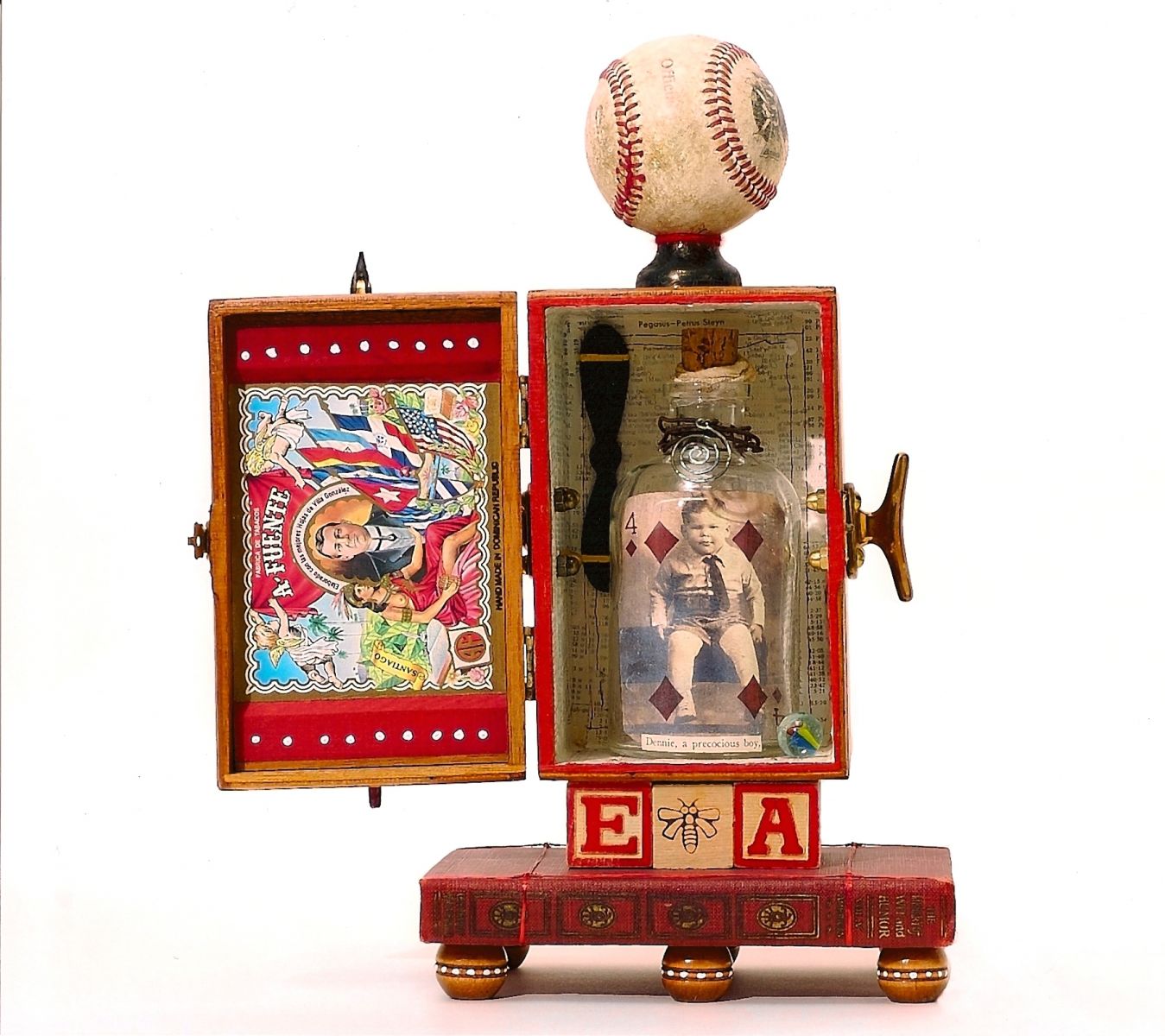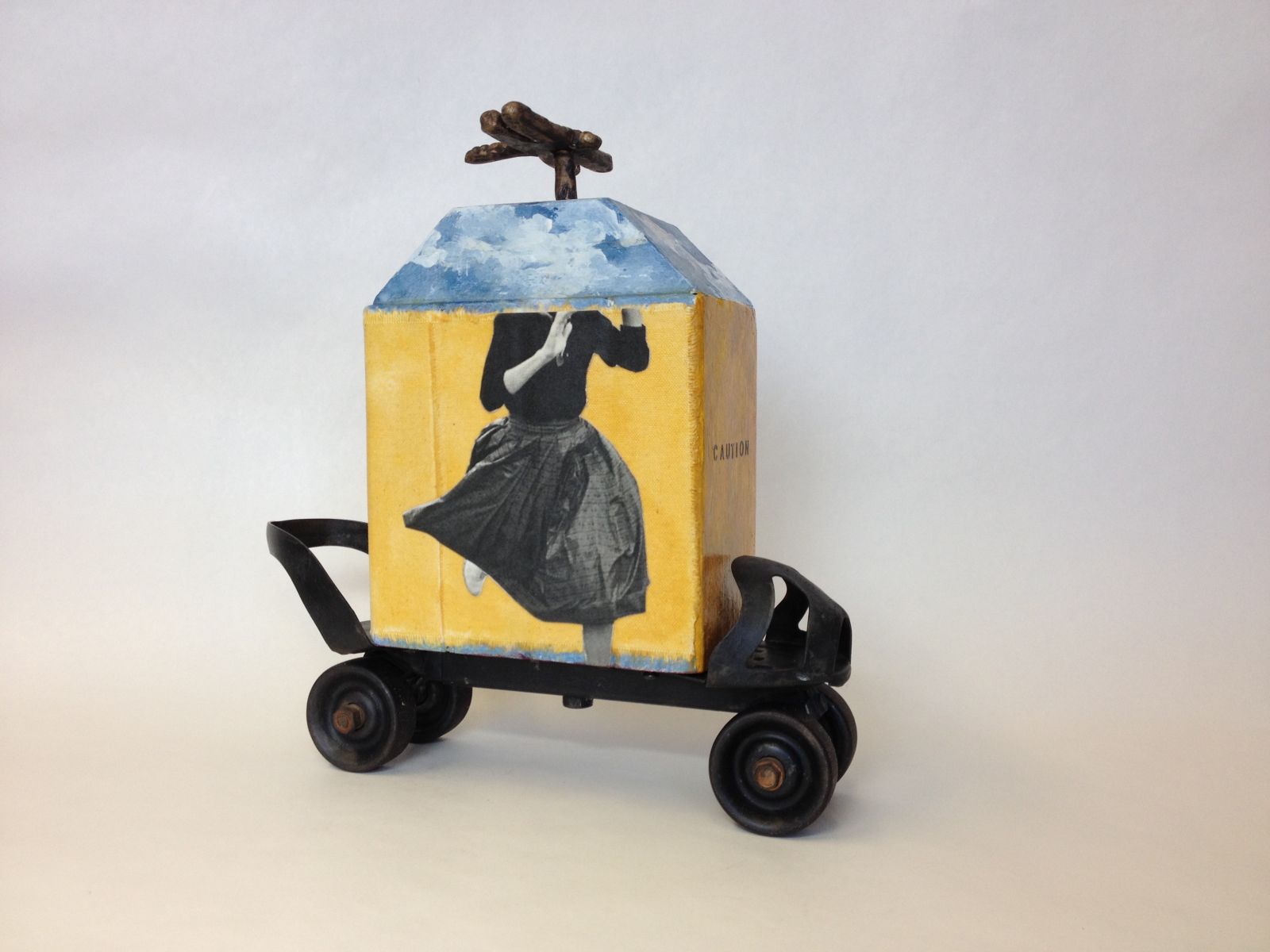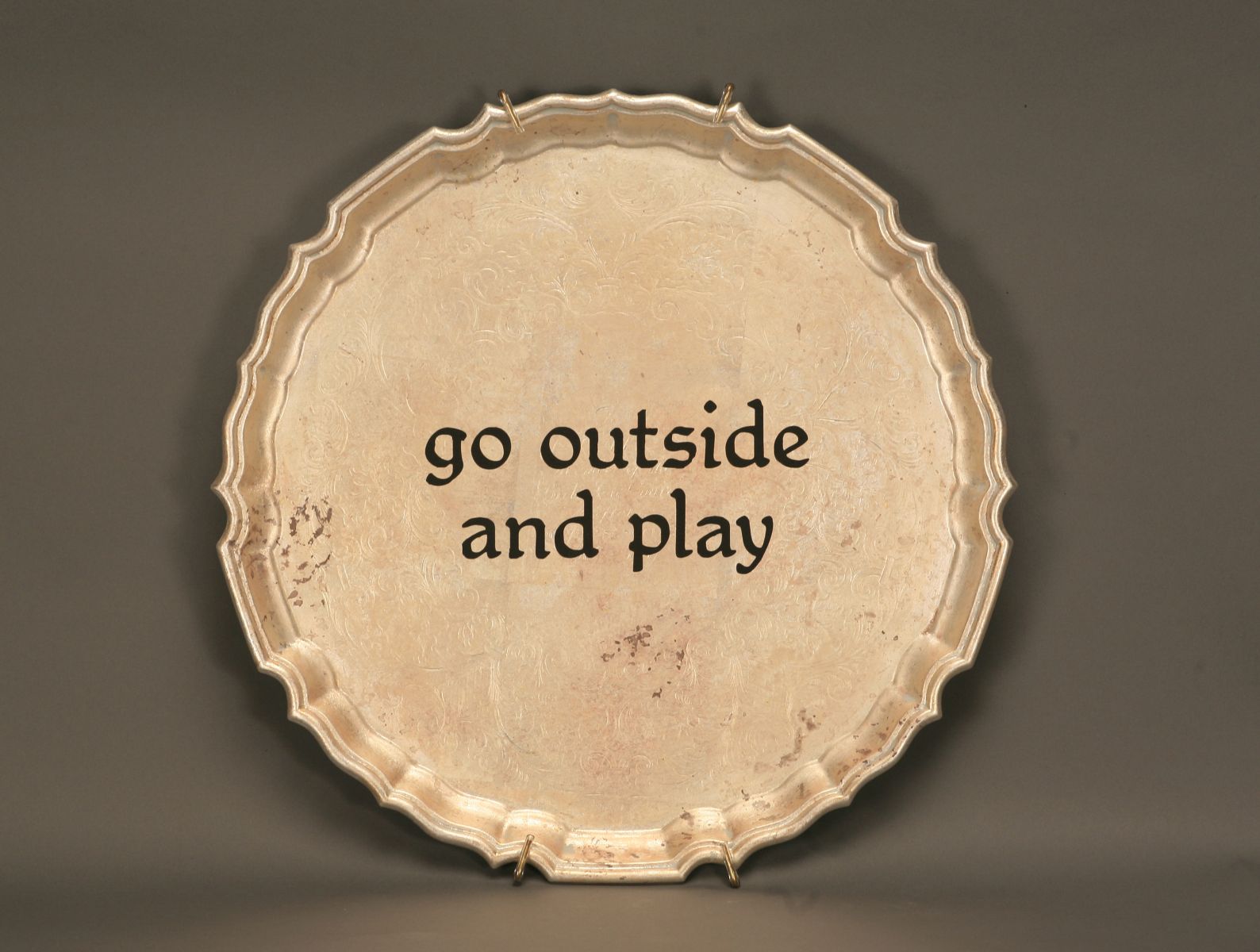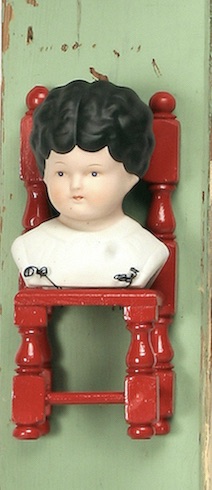Imagination at Play
Imagination at Play
by Marianne Lettieri
We are all familiar with two stereotypes often portrayed in books and films: the devout Christian as a dour, stern, and humorless fanatic; the Artist as an angry, relentlessly serious, and unfriendly creative. Although it is easy to find fault with such oversimplified clichés, we must admit they sometimes ring true. The absolute best remedy if we find ourselves sliding into one of these rueful caricatures is to go outside and play!
Our modern world is so fast-paced and confrontational that the enchantment of life is easily missed. Many of us focus so much on work and commitments that we never seem to have time for pure fun. Somewhere between childhood and adulthood, we stopped playing. When we do take time out, we’re more likely to sit in front of a TV or computer than engage in rejuvenating play like we did as children.
Young children accumulate a great amount of learning through play. While they are running, pretending, and building stuff, they solve problems and develop curious minds. Before long, some adult says, “enough playing around, time to learn something,” and we put them in chairs, teach them how to learn, and restrict play to recess. Openness to possibilities – what toddlers do with things new to them – is the beginning of exploratory play. As we get older, we tend to forget this and must relearn how to be playfully inquisitive. Adults worry that being playful and silly will get them labeled as childish or weird. But what is wrong with that? Children engaged in playing are incredibly creative and inventive.

Marianne Lettieri: Youth Dew: Curious
Play, like imagination, is an essential learning medium that contributes to all stages of life and areas of development, especially for those working in the arts. It is a healthy response to our consumer culture’s emphasis on academic training, marketability, and critical acclaim. When we play, we engage the creative sides of our brains and silence the inner editor that censors creative thoughts. It is the kind of silliness that makes us exclaim, “I can’t believe I’m doing this!”
The best of our art comes out of enthusiasm rather than working harder at it. The same can be said for faith grounded in joy, not discipline. Discipline, which works for only a short while, has the potential to become the whole point rather than the creative outflow. The word enthusiasm comes from the Greek “possessed by god, inspired.” Julie Cameron, author of The Artist’s Way, says, “Enthusiasm is not an emotional state. It is a spiritual commitment, a long surrender to our creative process, a loving recognition of all the creativity around us.” If we are able to see the world, ourselves, and one another with eyes of wonder and astonishment, our art will respond with reflections of truth and love.

Marianne Lettieri: Running Stop Signs
Creativity is a spiritual issue. Artistic growth and faith formation are aided by restorative goofing off. Is it not possible that Jesus, the carpenter, enjoyed making whimsical toys for the children whose parents followed him? Perhaps his disciples occasionally took time out of trudging around the Holy Land to play a rowdy game of catch or skinny-dip in Lake Galilee. Certainly a God who would create blue frogs and the duck-billed platypus has a playful sense of humor. Observe nature to know that God is extravagant, generous, joyful. We may feel that the only time God is pleased with us is when we’re doing “spiritual activities” like going to church and reading the Bible. But no, the Creator takes pleasure in all parts of our lives – working, playing, resting, eating, and watching us enjoy his creation.
Regenerative moments of playfulness are necessary for greater health and happiness. Research shows that joyful play releases the body’s endorphins, triggering a sense of wellbeing. Play also reduces cortisol, the stress hormone that can increase the risk for heart disease. Games that challenge the brain, such as chess and puzzles, improve brain function. Social interaction with others wards off stress and depression. Play can be simply throwing a frisbee to the dog, building a snowman with the kids, or getting together with friends to make something. There does not need to be any point to the activity beyond forgetting about work, having fun, and enjoying ourselves with the joyful abandon of childhood.

Marianne Lettieri: Banquet: Go Outside and Play
Being a serious artist does not mean we have to make our lives all about work. Some of the best advice I ever received was a business mentor who told me, “Take the job seriously, but don’t take yourself too seriously.” We want to make great art, trust in our beliefs, and live the life we love. However, we don’t need to get all bogged down in a mire of rigid duty and self-sacrifice that generates feelings of anger and depleted creativity. Wearing the mantle of respectability and maturity can be suffocating. It is when we don’t take ourselves or God seriously enough that we limit God’s provision for us, denying his gifts of joy and fun. Hard work is good, but so is fooling around. To deny ourselves time to laugh, be with family and friends, and fuel our passions, we get caught in what Cameron calls the “treadmill of virtuous production.” We become the longsuffering artist who has a false sense of spirituality based on being above human nature to play.
If making art has become a drudge, most likely the artwork has also lost its sparkle. Perhaps we have been doing the same thing for too long, or we’ve given more concern to time and business management than art experimentation. As a result, the art has become boring and devoid of spontaneous insights. We find ourselves returning to tired concepts and stylistic devices, making craft rather than expanding our art. If our art is beginning to look barren and lifeless, like preserved taxidermy, it may be time to stop making work and work at learning to play. For the hard driving, stressed out artist, playtime can fuel the imagination, supercharge learning, and make work more productive and pleasurable.

Marianne Lettieri: ABC-darians (detail
Let us try to feel like kids again, embracing process over product, because true creativity lies in the doing, not the done. When we are used to focusing on results, we may feel foolish entertaining outrageous ideas. Play may seem silly, and that’s the whole point. Take creative risks in the studio, be curious, make a mess, invite disruption, and ignore concerns that we need to show something for our labor. Go ahead, entertain failure by exploring new media. Decorate our workspaces with toys, weird stuff, arresting imagery, and objects that inspire and remind us to be permissive and playful. Be crazy and go on an adventure – the more bizarre the better – and stay open to the ridiculous. Playful diversions not only give clarity to see problems in new ways and to come up with fresh solutions in the art process, they also reap physical, emotional, spiritual and social benefits.
*******
1. Marianne Lettieri: Youth Dew: Curious, 12x5x7 inches, mixed media construction.
2. Marianne Lettieri: Running Stop Signs, 11x11x4 inches, mixed media construction.
3. Marianne Lettieri: Banquet: Go Outside and Play, 12-inch diameter, altered object.
4. Marianne Lettieri: ABC-darians (detail), 50x29x5 inches, mixed media construction.
For more information on the role of play:
“Tales of Creativity and Play,” TED Talk by Tim Brown, CEO of IDEO, May 2008. https://www.ted.com/talks/tim_brown_tales_of_creativity_and_play
The Artist’s Way: A Spiritual Path to Higher Creativity by Julie Cameron, Penguin Putnam, Inc. 2002.
“Why more play is the key to creativity and productivity,” by Matt Davis, BIG THINK, October, 24, 2019. https://bigthink.com/personal-growth/play-creativity
“The Benefits of Play for Adults,” by HelpGuide, June 2019. https://www.helpguide.org/articles/mental-health/benefits-of-play-for-adults.htm
Marianne Lettieri is a visual artist whose mixed media constructions investigate individual and cultural values associated with everyday objects and discarded materials. She has an M.F.A. in Spatial Arts from San Jose State University and B.F.A. in Drawing and Printmaking from University of Florida. She serves on the board of directors for CIVA (Christians in the Visual Arts) and is the co-author of Seeing the Unseen: Launching and Managing a Church Gallery. Her work can be seen on the website: www.mariannelettieri.com.






